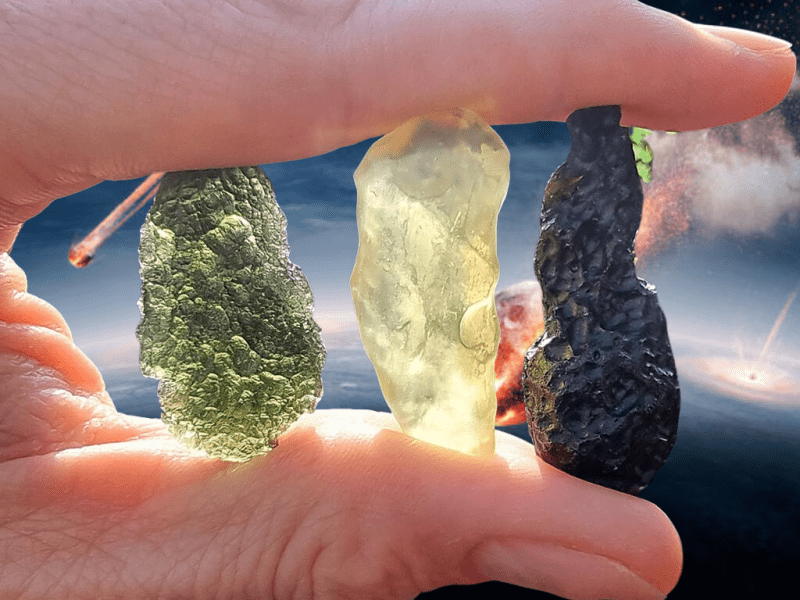
Unveiling the Mysteries of Tektites: From Moldavite to Libyan Desert Glass
Share
Introduction
Have you ever heard of tektites? These enigmatic gems possess an otherworldly allure that captivates collectors and crystal enthusiasts alike. In this blog post, we'll delve into the fascinating realm of tektites, exploring what they are, how they form, and highlighting three notable types: Moldavite, Libyan Desert Glass, and Indonesian Tektites. So, let's embark on this cosmic journey!
What are Tektites?
Tektites are natural glass objects formed through intense meteorite impacts on Earth's surface. They result from the extreme heat and pressure generated during these cataclysmic events. As the meteorite strikes the ground, it vaporizes the surrounding material, which then cools and solidifies rapidly, forming unique glass-like stones.
Formation of Tektites
The formation of tektites is an intriguing process. When a meteorite collides with Earth, the tremendous energy generated vaporizes rocks and minerals, ejecting them into the atmosphere. These molten fragments travel through the air, cooling and solidifying as they fall back to the ground, sometimes thousands of kilometres away from the impact site.

Moldavite
Moldavite is arguably the most renowned and sought-after tektite variety. Found primarily in the Czech Republic, Moldavite is treasured for its vibrant green color and distinct, sculptural appearance. Believed to have formed approximately 15 million years ago, Moldavite's unique energy is said to stimulate spiritual growth and transformation. It has become a favourite among crystal enthusiasts and spiritual practitioners worldwide.

Libyan Desert Glass
In the expansive sands of the Libyan Desert, a captivating tektite known as Libyan Desert Glass can be found. This translucent yellow-green gem has a rich history intertwined with ancient civilizations. Libyan Desert Glass is estimated to be approximately 28 million years old, and its origins remain a subject of scientific speculation. Some suggest it formed from the heat and pressure generated during meteorite impacts, while others propose it might be the result of a meteorite airburst. Libyan Desert Glass is in its chemical and physical characteristics absolutely unique and with no other natural glass (volcanic glass, tektites and impact glass) being comparable.

Indonesian Tektites
Indonesia is home to a diverse array of tektites, collectively known as Indonesian Tektites. The most famous among them is the black tektite called "Australite" or "Indochinite." Found in Australia and Southeast Asia, Australites are approximately 800,000 years old and have distinct, aerodynamic shapes. These tektites are believed to have formed from the impact of a massive asteroid or comet that struck the Earth during the mid-Pleistocene era.

Final Thoughts
Tektites, such as Moldavite, Libyan Desert Glass, and Indonesian Tektites, offer a glimpse into the cosmic forces that have shaped our planet. These captivating gems carry an air of mystery and intrigue, attracting both scientific interest and spiritual fascination. Whether you seek their metaphysical properties or admire them for their aesthetic appeal, tektites continue to mesmerize and connect us to the wonders of our celestial past.
So, if you're ready to embark on a cosmic journey, consider exploring the extraordinary world of tektites and immerse yourself in the awe-inspiring beauty and history they possess.
Search for your favourite piece through our amazing collection of tektites from all over the world!!